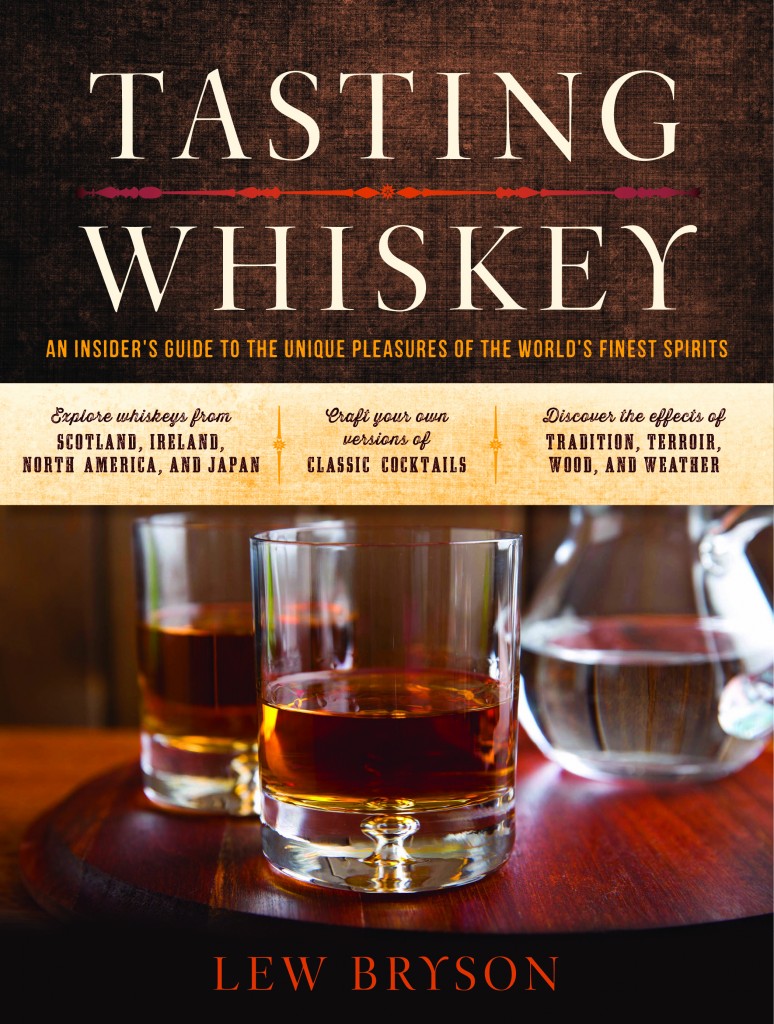On the cover of Lew Bryson’s Tasting Whiskey, there’s a quote from the whiskey writer Charles Cowdery: “I shouldn’t say this is the only whiskey book you need, but it probably is.”
Mr. Cowdery’s reticence is understandable; he writes whiskey books, and he wants to maintain his comfortable lifestyle. I don’t know if I’d go so far as Cowdery. I’ve read some damn fine whiskey books in my years as a tippler, and I’d recommend them all.
But I will say this much: this is the book you want and need if you’re just starting out in whiskey.
Bryson maps the major styles of whiskey, from bourbon to rye to Canadian, from Irish to Scotch to Japanese, and from craft to the various world whiskeys (that is, from growing markets such as India and Taiwan). He describes what sets the various styles apart from one another; so, for example, he details the grains that are in each style, the barrels it’s aged in, the climates and warehouses that hold it, and the length of time its aged.
Scotch, for example, is made primarily or exclusively from malted barley; it’s aged in used barrels (normally bourbon, but with some sherry and other wine casks tossed in for additional flavor); it ages in a cooler climate that enables longer aging; and it can age for up to 30 years or more without getting too woody.
Bourbon, conversely, is made primarily from corn, with other grains in the mix to add accent flavors; it ages in new oak barrels that impart more woodiness than do scotch’s used barrels; it ages in a warmer climate that ages it more rapidly than Scotland’s cooler climate; and therefore, it usually reaches its peak at roughly 10-12 years.
Each individual style is different, and Bryson masterfully explains how those differences affect the flavors of the finished product.
Every whiskey drinker starts somewhere. I started with bourbon and moved to scotch and then rye and on to other styles. When I started drinking scotch, I couldn’t begin to understand what made it unique until I started reading books that helped me puzzle it all out. Tasting Whiskey is such a book.
Its other strength is the infographics the book uses to illustrate some rather complicated concepts. I write about whiskey, and so I know that it’s not always easy to describe, in words, the effects of barrel aging, or how barrel placement in a warehouse affects how quickly or slowly the whiskey ages. These infographics, illustrated masterfully by Andrew Heath, demonstrate these concepts concisely and thoroughly.
Excerpted from Tasting Whiskey (c) Lew Bryson. Illustrations by (c) Andrew Heath. Used with permission of Storey Publishing.
After describing the major styles, Bryson then provides advice on how to drink the stuff, in an enjoyable chapter on water, ice, and cocktails. Is it okay to drink your whiskey with a bit of water? Bryson tells you. On the rocks or neat? He has some answers for that as well. Cocktails? Of course! What I enjoyed about this chapter was how conversational and story-oriented it was. No recipes at all, just a description of how to make a damn good Manhattan or Old Fashioned.
I’ve met Bryson in person; we were in Kentucky together earlier this year for Jimmy Russell’s anniversary celebration at Wild Turkey. He impressed me with his approachable and avuncular temperament, and that personality shines through this book.
If you’re new to whiskey, and you need a friendly guide to the topic, Bryson’s book is for you. But if you’ve been around the block a few times, you’ll still find this book to be enjoyable and useful. I learned quite a bit from it.
Disclaimer: I received a review copy of this book, and Lew Bryson is a personal friend of mine.
SOURCE: A Dash of Bitters – Read entire story here.



